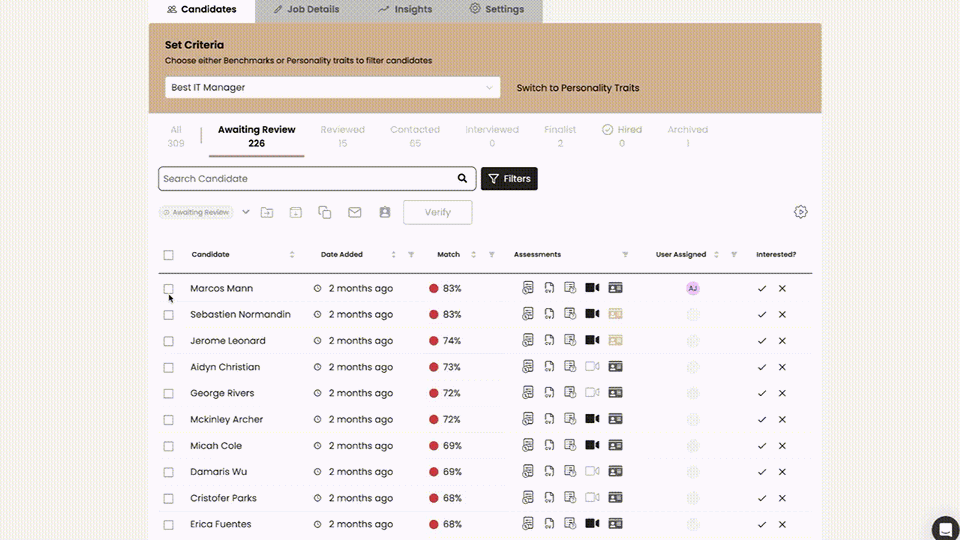We’ve all been there at one point or another: we’ve found ourselves in a sticky situation with someone and didn’t quite know how to cut things off, so we “ghosted” them. Maybe you’ve done it to someone you found out after a few dates you’re not actually that well suited to be with. Maybe you’ve even done it to a would-be employer after finding out you didn’t actually want the job offer after all. By no means do we endorse ghosting others, but sometimes, you feel like it might be the easiest way to get out of a situation without outwardly hurting anyone’s feelings. Still, of all the people to ghost, we think you should never ghost your job candidates.
And yet, people looking to hire do it all the time. In fact, according to Ideal Traits, less than 1% of Fortune 500 companies send out rejection emails to their applicants. That means that the vast majority of job applicants will be used to just never hearing back from a company unless they’re invited to a job interview. But as we all know, just because everyone does it doesn’t mean it’s the right thing to do.
But why should you invest in applicants you may never see or hear from again? And how can you be expected to email everyone who applies to your job posting, especially in the age of rage applying?
Everything you need to know about avoiding candidate ghosting is in this blog. Read on for our top reasons why you need to keep your candidates up-to-date with their job applications and our top tip for doing so with ease and great speed!
Our Top 5 Reasons to Never Ghost Your Candidates
As mentioned above, many who are hiring are guilty of not letting their candidates know if they didn’t get the job. Some think that it’s enough to just take the job posting down and let time reject the candidate.
But we’re here to set the record straight: it’s not enough and it’s not good for either party involved. So, as easy and cheap as it may be, don’t do it!
You probably want some reasons for not doing so, right? Well, here are five.
1. It’s the right thing to do!
I’m sure you’ve been ghosted by a hiring professional before yourself. It’s the worst, isn’t it? You get your hopes up and you have to let those hopes go week after week with no word back from the hirer(s). But not only is this a discouraging process for the applicants, it can even lead to further losses on their end.
Let’s say you’re their first choice out of a few companies they’ve applied to. If they’ve gotten offers from other employers, they might be hesitating on accepting those until they hear back from you.
And if you never send them a response, they may be at risk of losing out on other opportunities. And nobody wants to be that person. So, do the right thing: keep them in the loop constantly and quickly.
2. You might want to hire a candidate for another position
Nothing burns bridges quite like bad first impressions. If a potential job candidate’s first impression of you and your organization is your lack of communication, usually that’s not a good sign they’d want to work for you, anyways.
A company with good communication skills will demonstrate them from the very first step of the hiring process. So, even if you’re not interested in hiring a candidate for this job, make sure you’re not putting them off considering you for another one down the road.
After all, if your rejection process is smooth, swift, and respectful, a candidate might not have any hard feelings. In fact, they might feel more inclined to go for a job that shows they care enough to reach back out to former applicants and prioritize them over other external candidates.
So, don’t let those bridges burn. You might still need them for others to cross later.
3. Set a good example for mentees and other staff members
No one likes a hypocrite, but this is even worse if you’re in charge of training and managing others. So, practice what you preach and practice healthy and respectful communication with both people in and outside of your organization. And if you’re constantly role modelling this behavior, you’ll surely start to see those in your peers and employees, too.
It’s as simple as that!
4. Ghosting candidates can harm your organization’s reputation
In addition to making sure former applicants and current staff know you as a recognizably communicative and respectful employer, you also need to make sure the general public knows this of you, too.
Sure, many companies ghost their candidates and get away with it on the large-scale. But many job applicants these days—especially those in the younger generations—share their negative experiences online.
And we know how easy it is for information to spread on platforms as influential as TikTok, Instagram, and Twitter. So, if you really need another reason for not ghost your candidates, consider what’s at stake for your reputation.
5. Treating candidates right can build good external relationships
When an applicant has a bad first impression of you, that impression might stick with them for life. And whether they spread word about their negative experience with their application to your organization or keep that to themselves, you’re still at risk of them burning a bridge with you not only on the personal but on the organizational level.
Let’s say they now work for a company you could potentially partner with or work with in another professional way. That other organization will probably not have the best impression of you even if the former applicant is not consciously bashing your organization. (Not everyone holds grudges, but why take the risk when a powerful partnership could be at stake?)
The best way to prevent a domino effect is stopping the problem at its root cause. So, to prevent burning a big bridge later on down the road, make sure you’re also not burning smaller, individual ones, either.
Our Trick for Quick and Kind Rejections
Hopefully by now, we’ve convinced you to never ghost your candidates again. But are you going to have to email a rejection to every single applicant every time you have an interesting job opening posted online? We don’t recommend it. What we do recommend is, of course, our own platform!
Let Workwolf take the letter writing off your hands. When you use our platform to hire, you also gain access to our free message templates that let your applicants know exactly where they are in your hiring cycle.
The best part? Our messages are easily customizable, so your candidate will know it’s from you and regarding which job for which they’ve applied. After all, some may indeed be mass applying to jobs, also known as “rage applying.”
So, even if you do get countless applications from candidates who would be a poor match for your job, you don’t have to respond to each individually. Even better, you don’t have to feel guilty about ignoring them entirely.
Just look at how swift and simple it is to remove a candidate from a candidate pool and send them a rejection message:

The rejection process from start to finish in just seconds.
Ready to send those long-overdue rejection messages in a more pain-free way? (I mean, how can a rejection process get any better?)
Sign up for your free Workwolf Business account here and start sending customized messages today.





